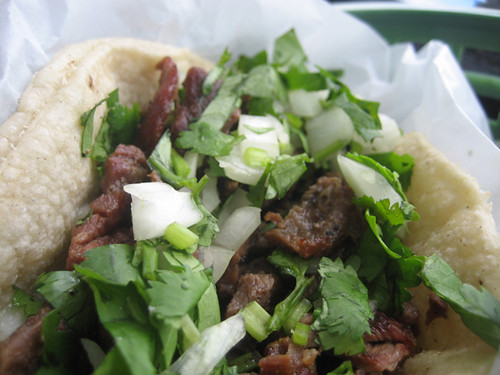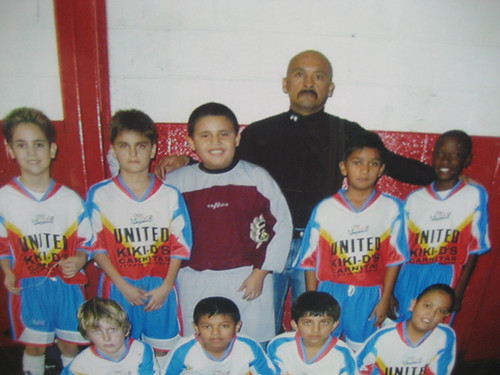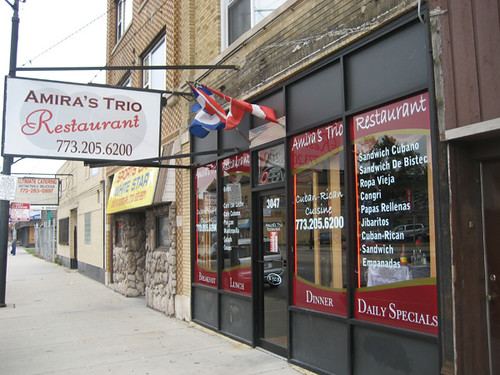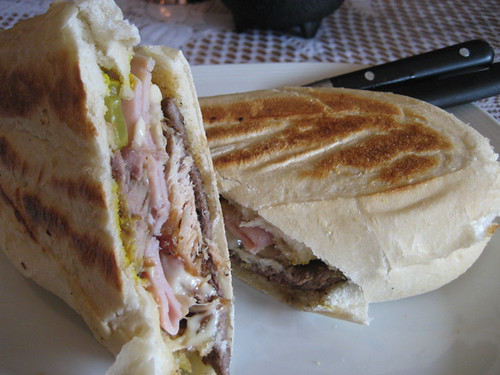I was a bit startled to learn from an LTHForum thread that Boka had opened in (late) 2004. I was thinking of it as one of the new restaurants; apparently it just slightly postdates Charcoal Oven. Nevertheless it is slightly newer than it looks thanks to the presence, and subsequent Food & Wine best new chefs anointment, of Giuseppe Tentori, who I guess has just been there a couple of years at most.
If, as was claimed at the time, Boka was once trying to be the new Blackbird, that’s clearly not Tentori’s aim. He’s clearly aiming for a delicate sort of Asian fusion in which main ingredients are paired with surprising new flavors, many of them citrus fruits or of a similar lightness. So it’s more like the new Yoshi’s, or the new Le Lan— or whatever the hot restaurant of Asian fusion circa 1991 was, it felt more like dining a decade-plus ago than the last several upscale meals I’ve had. Not that I object to a little time travel with my meal, any day.
The down side is that many of these novel flavor combinations just didn’t pan out; the meal was a frustrating mix of spot-on marvels and weird, who-thought-that-went-together moments. A starter of hamachi paired with a brightly grassy cilantro sauce and something called “young coconut-buddha hand vinaigrette” (I could look up what all that means, but really, it’s better as just pure poetry) was exquisitely light, a little shot of helium for the palate. Slices of duck breast in some combination that included a cornmeal sauce (however such a thing is possible) were savory and intensely satisfying. Sweet roasted beets with a tangy beet puree and little dicey bits of smoke flavor from Nueske’s bacon was a terrific salad.
But a scallop came with some odd combination of fruit and whatnot that tasted like banana next to it, doing no more to enhance the flavor of the scallop than dipping it in chocolate sauce would. And a baby squid accompanied by squid-ink tapioca (trying to be caviar, coming off more like a briny Jell-O pudding) was flat, it just needed another note to make it all zing. Nothing was so far off that I wanted to call in Gordon Ramsay to ask “Did you fookin’ taste this before you sent it out?”, but I would have sent a couple of them back for rethinking and simplifying. The fact that you can get an odd fruit this time of year does not mean you have to use it with the first piece of protein that comes along…
Dessert ended things on a high note; I really, really liked a crepe cake with cider sorbet, a perfect autumn dessert with great texture and flavors. The room is quite nice, romantically dark and cozy, sails that look like they came from Calatrava’s Milwaukee art museum make something dramatic out of a square box room. Service was pretty solid, a little young and overeager in its enthusiasm for chef’s cuisine, but capable and on top of things throughout (when my wife noted that her cocktail had been quite strong, the immediate response was to summon an extra round of bread service). All in all a good meal, but not one that made me feel like I was in the assured hands of a master; if I were to return it would be with more thought given to each thing before I ordered it, and whether I really believed that its four or five preciously described ingredients belonged together.
Boka
1729 N Halsted St
Chicago, IL 60614
312-337-6070
www.bokachicago.com


 Posted in
Posted in 









